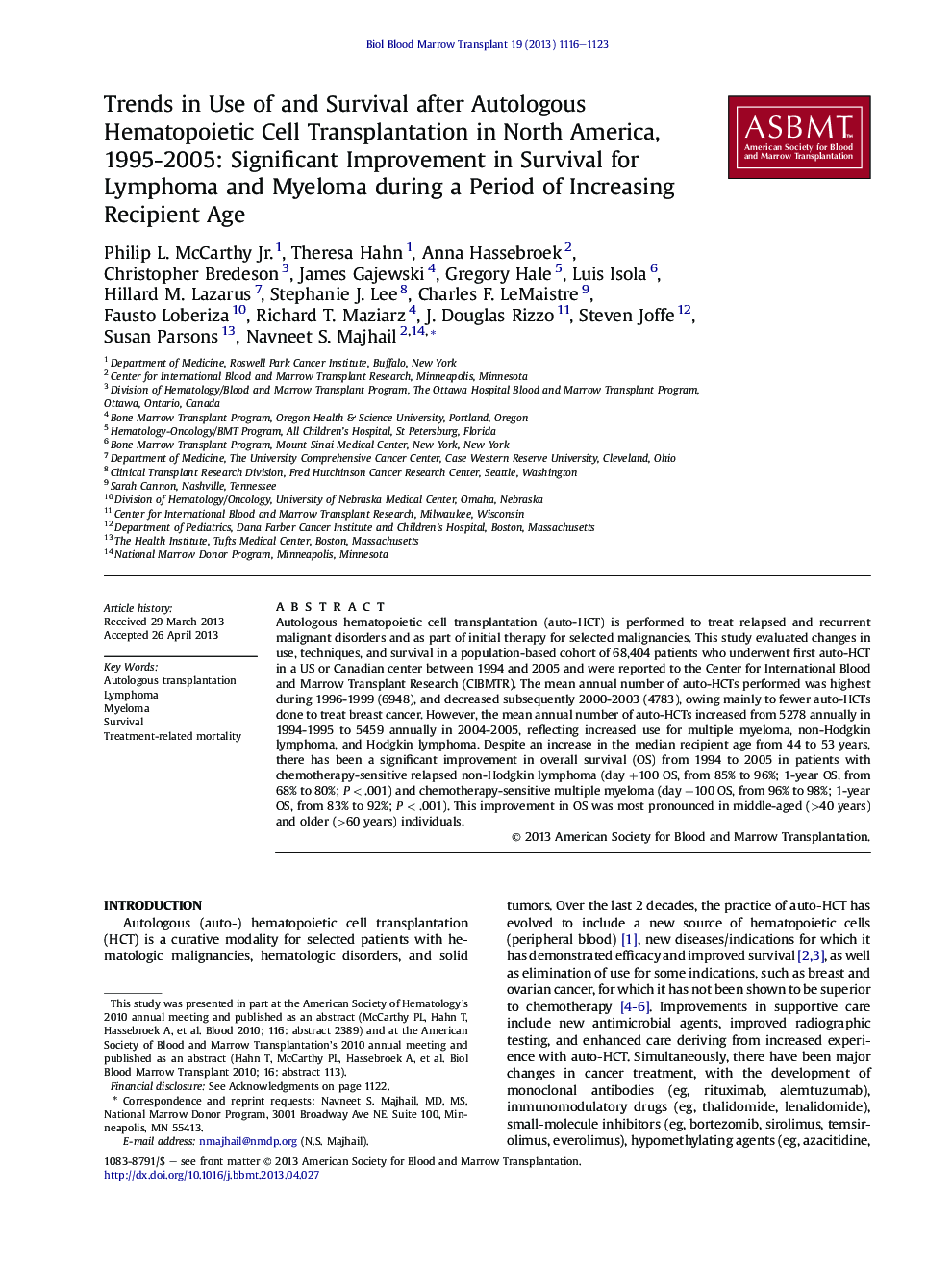| Article ID | Journal | Published Year | Pages | File Type |
|---|---|---|---|---|
| 2105254 | Biology of Blood and Marrow Transplantation | 2013 | 8 Pages |
Autologous hematopoietic cell transplantation (auto-HCT) is performed to treat relapsed and recurrent malignant disorders and as part of initial therapy for selected malignancies. This study evaluated changes in use, techniques, and survival in a population-based cohort of 68,404 patients who underwent first auto-HCT in a US or Canadian center between 1994 and 2005 and were reported to the Center for International Blood and Marrow Transplant Research (CIBMTR). The mean annual number of auto-HCTs performed was highest during 1996-1999 (6948), and decreased subsequently 2000-2003 (4783), owing mainly to fewer auto-HCTs done to treat breast cancer. However, the mean annual number of auto-HCTs increased from 5278 annually in 1994-1995 to 5459 annually in 2004-2005, reflecting increased use for multiple myeloma, non-Hodgkin lymphoma, and Hodgkin lymphoma. Despite an increase in the median recipient age from 44 to 53 years, there has been a significant improvement in overall survival (OS) from 1994 to 2005 in patients with chemotherapy-sensitive relapsed non-Hodgkin lymphoma (day +100 OS, from 85% to 96%; 1-year OS, from 68% to 80%; P < .001) and chemotherapy-sensitive multiple myeloma (day +100 OS, from 96% to 98%; 1-year OS, from 83% to 92%; P < .001). This improvement in OS was most pronounced in middle-aged (>40 years) and older (>60 years) individuals.
